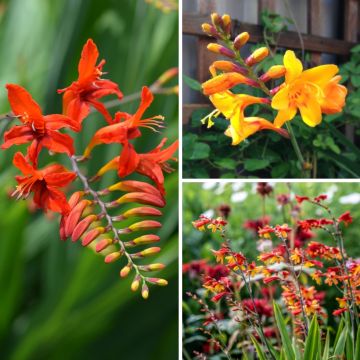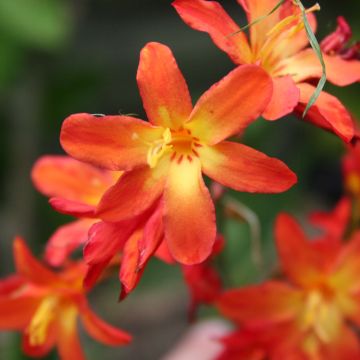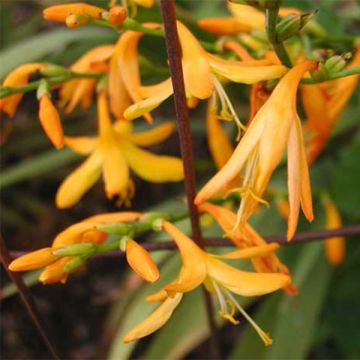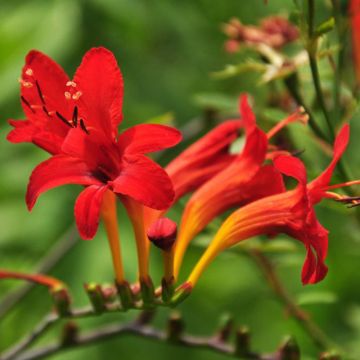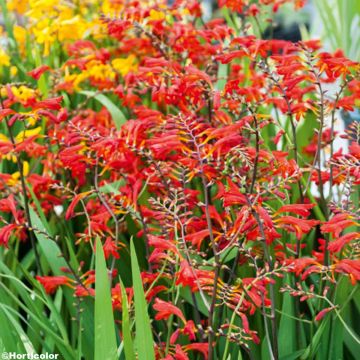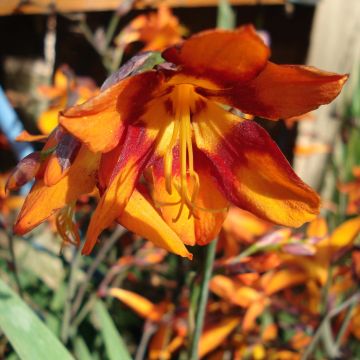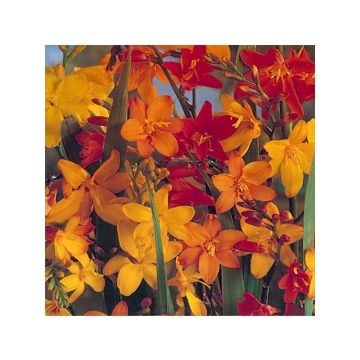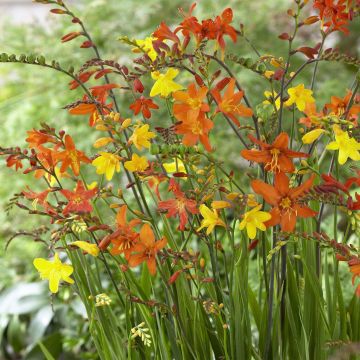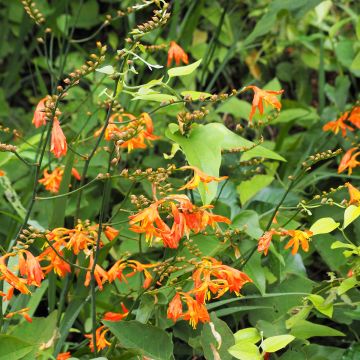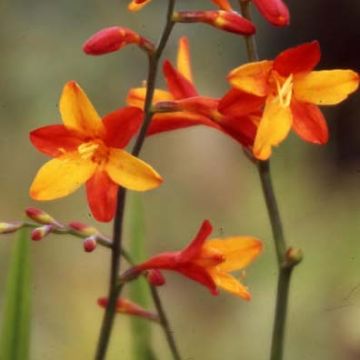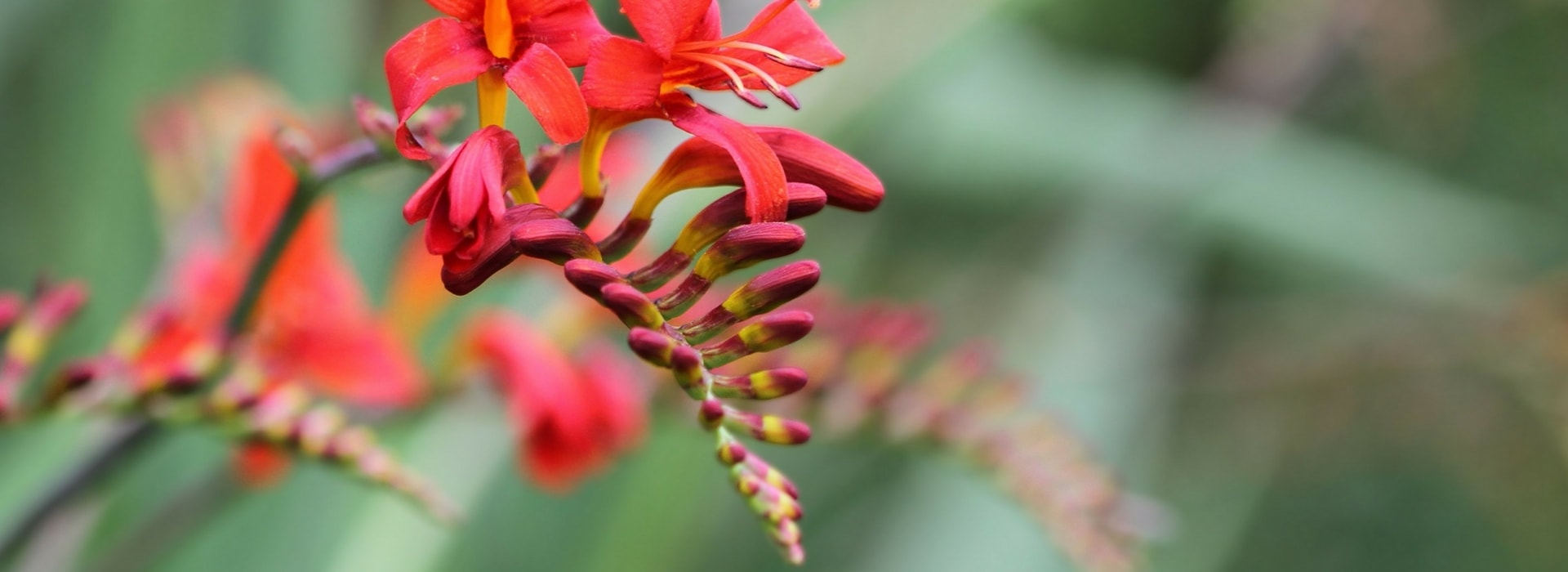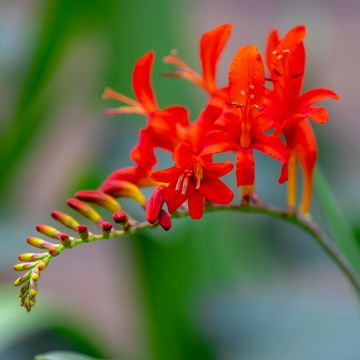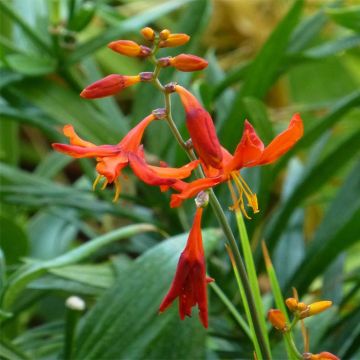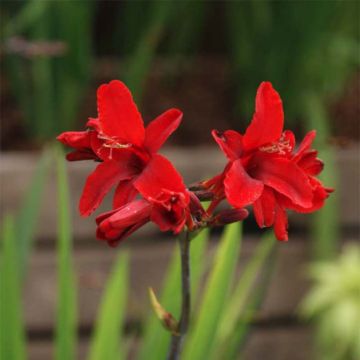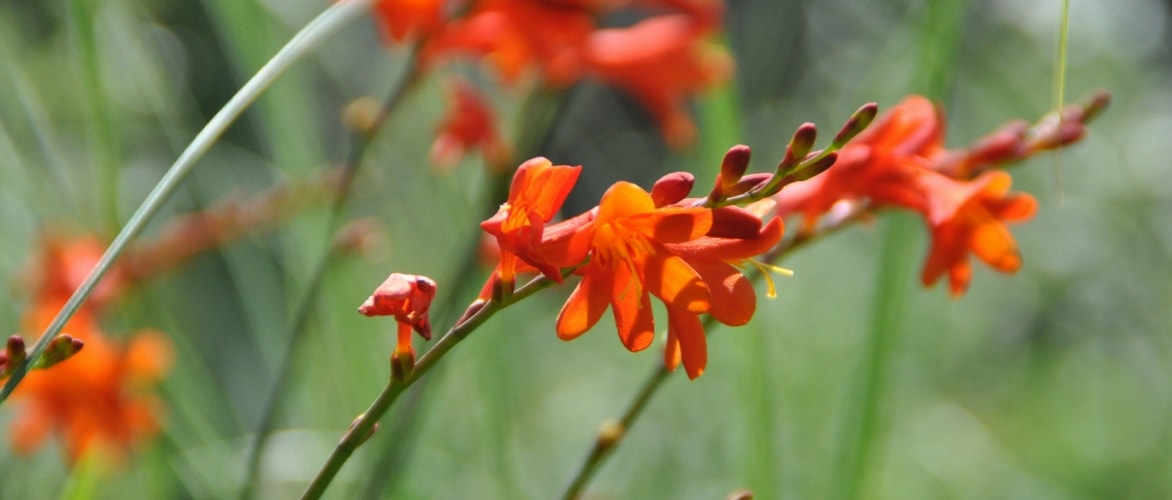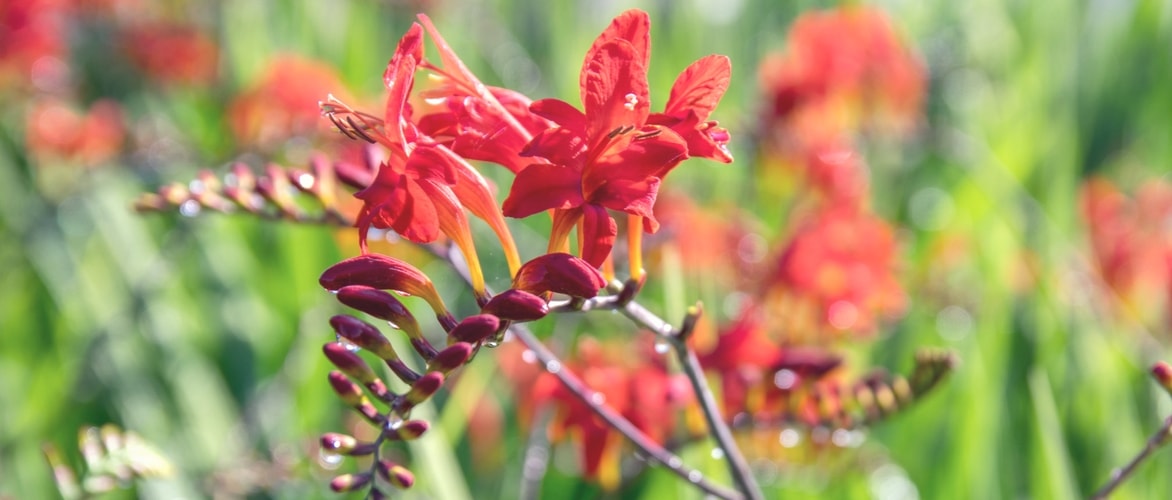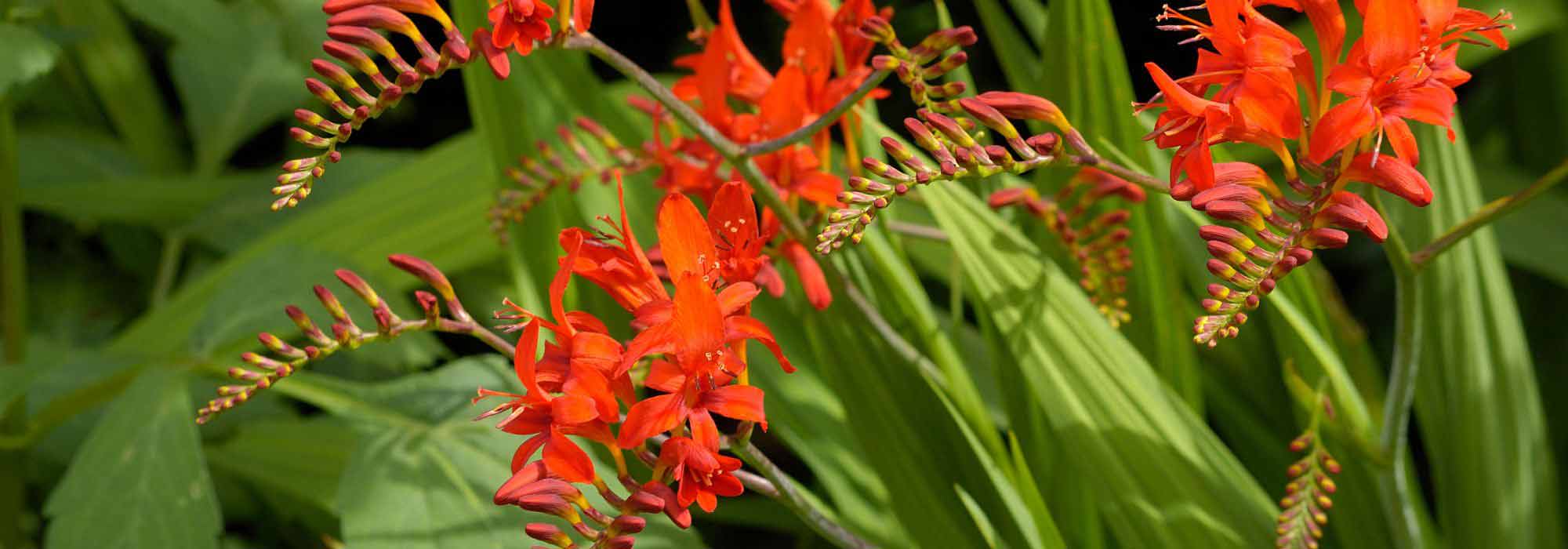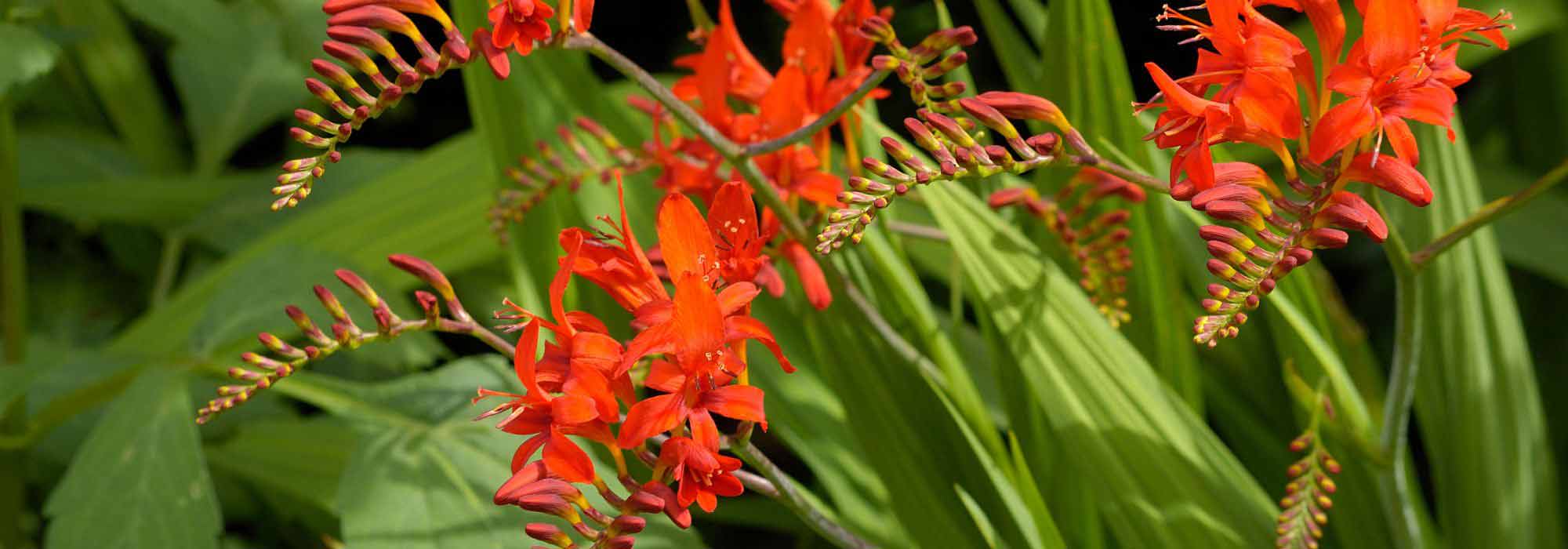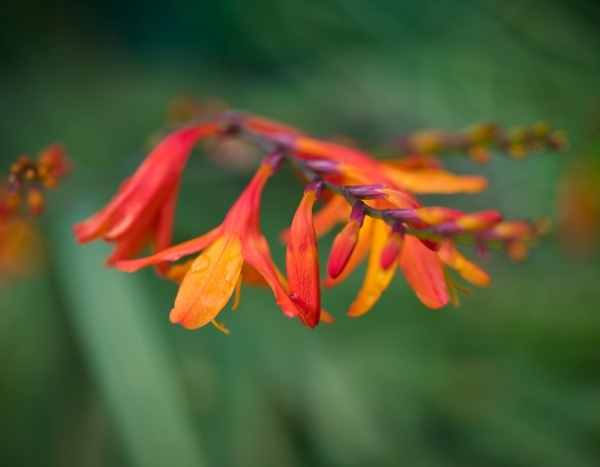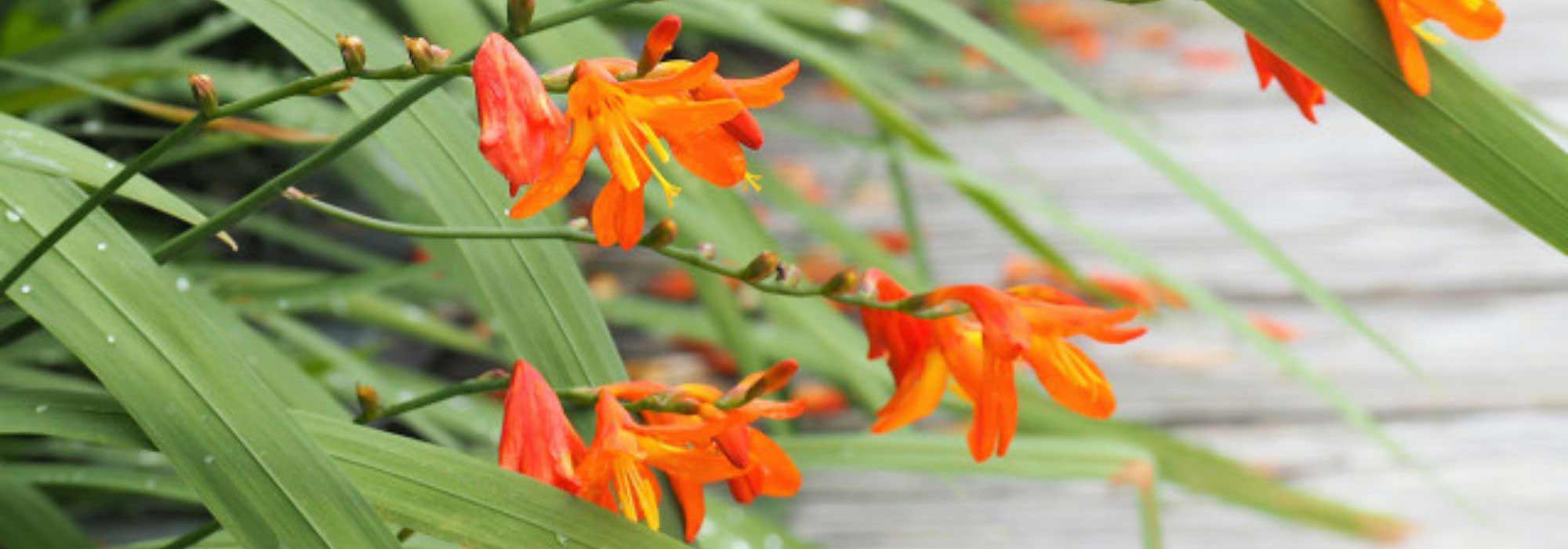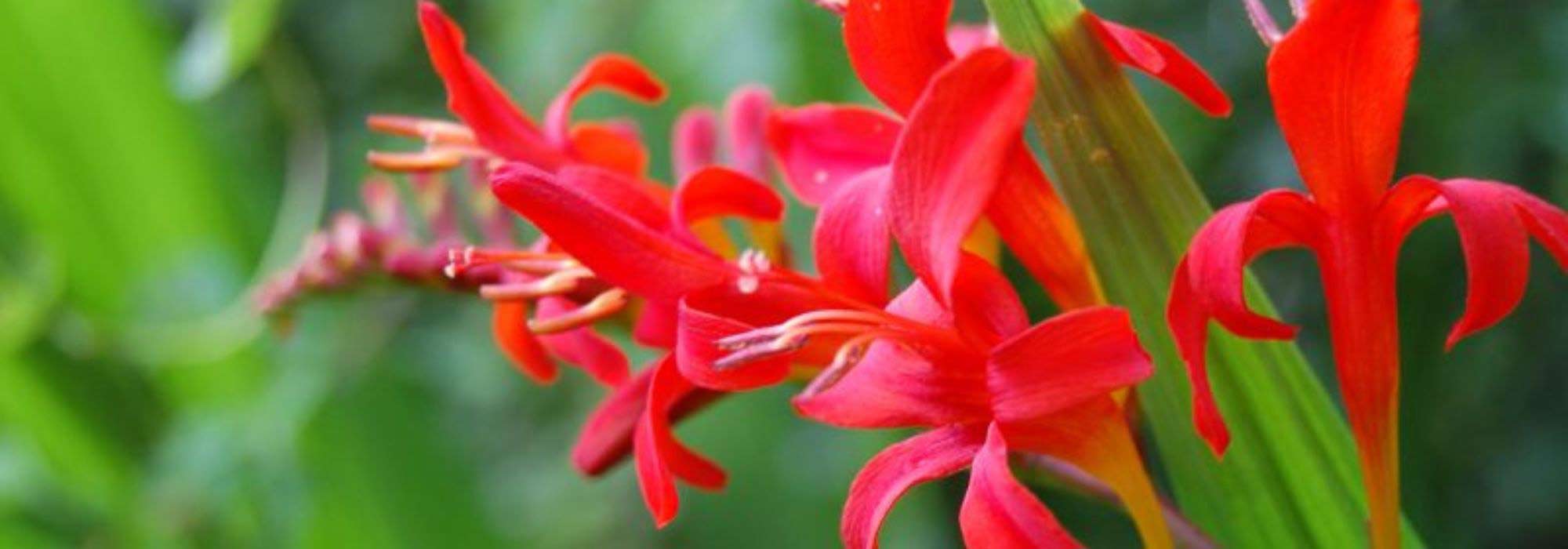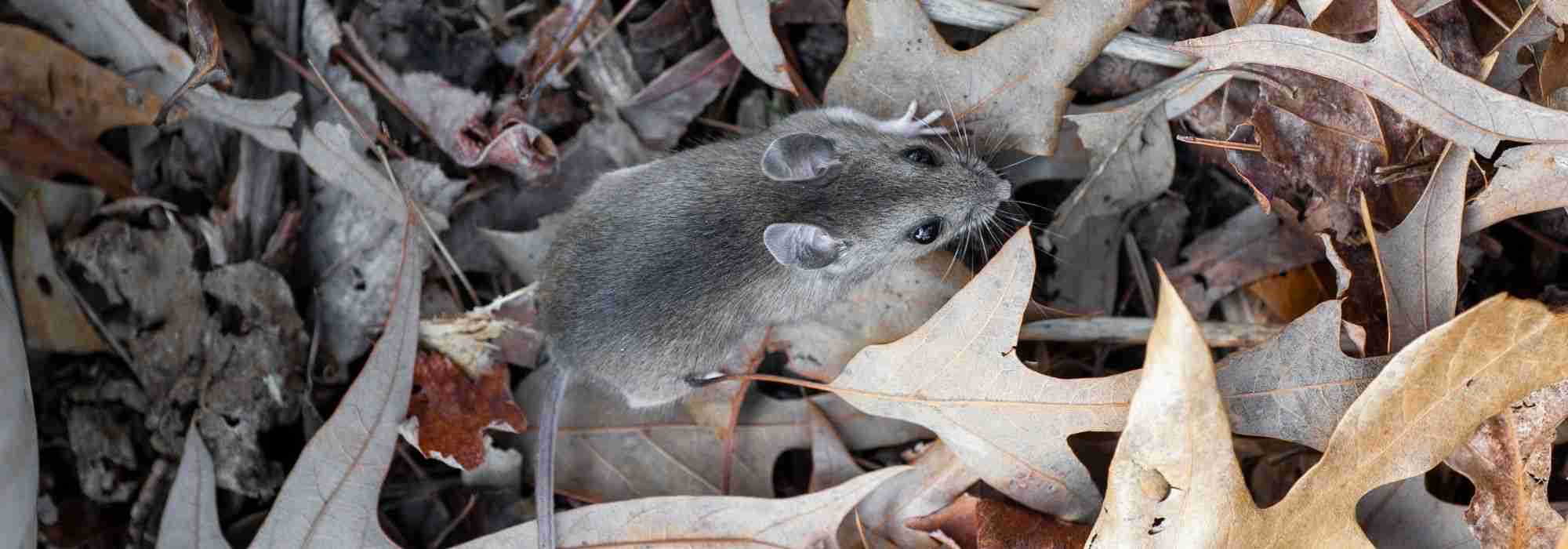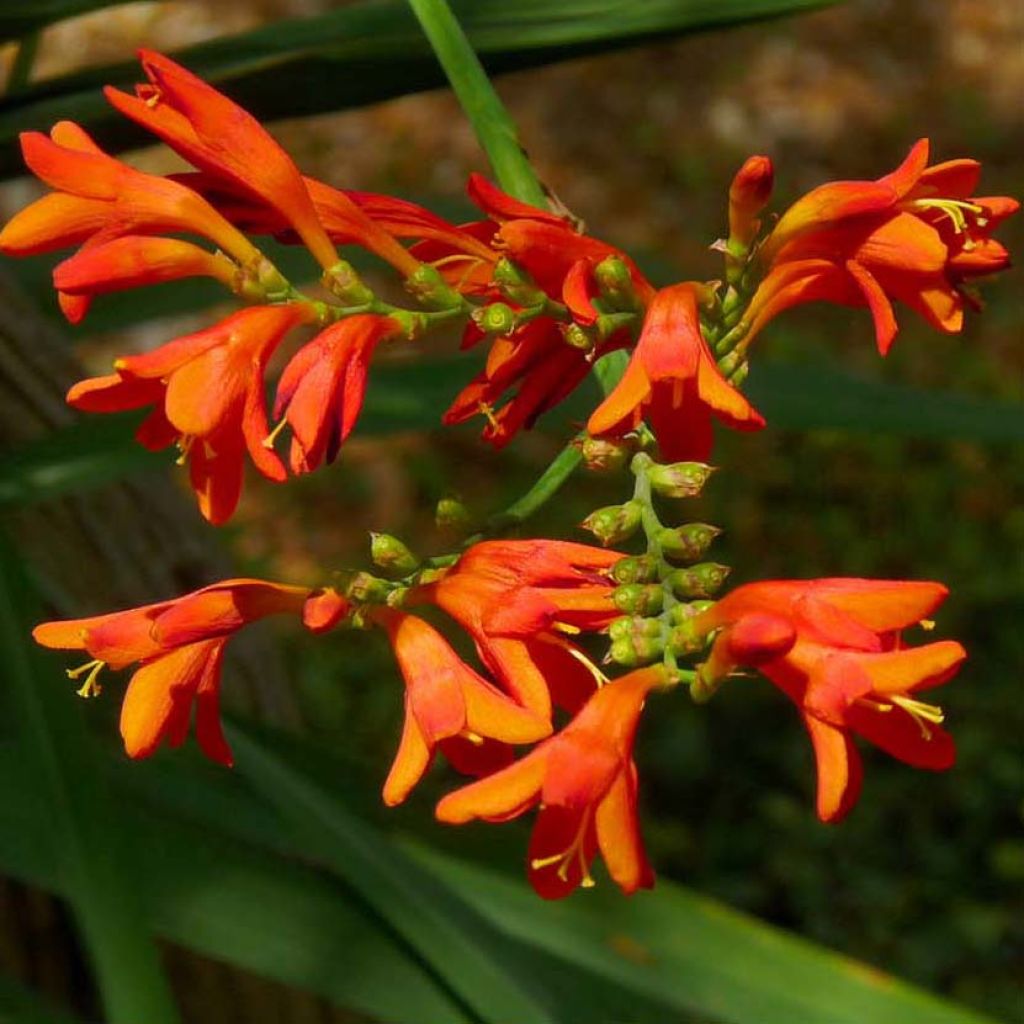

Crocosmia Meteore - Montbretia
Crocosmia Meteore - Montbretia
Crocosmia crocosmiiflora Météore
Montbretia
Special offer!
Receive a €20 voucher for any order over €90 (excluding delivery costs, credit notes, and plastic-free options)!
1- Add your favorite plants to your cart.
2- Once you have reached €90, confirm your order (you can even choose the delivery date!).
3- As soon as your order is shipped, you will receive an email containing your voucher code, valid for 3 months (90 days).
Your voucher is unique and can only be used once, for any order with a minimum value of €20, excluding delivery costs.
Can be combined with other current offers, non-divisible and non-refundable.
Why not try an alternative variety in stock?
View all →This plant carries a 12 months recovery warranty
More information
We guarantee the quality of our plants for a full growing cycle, and will replace at our expense any plant that fails to recover under normal climatic and planting conditions.
Would this plant suit my garden?
Set up your Plantfit profile →
Description
Crocosmia 'Meteore', also known as Montbretia, is a beautiful plant, perennial by its bulb, albeit a little frost-sensitive, but capable of producing dozens of flower clusters like small lilies throughout the summer. Each brightly coloured flower is a mix of red, orange, and yellow and gathered in long, arching spikes emerging from beautiful iris foliage. This plant is easy to grow in the sun, in moist soil. Its flowers shine in flower beds, in pots or as cut flowers.
Crocosmia is a herbaceous perennial plant with corms, originating from South Africa, belonging to the Iridaceae family. It shows many similarities with the gladiolus. The 'Meteore' variety forms a clump of flexible basal leaves, 50 cm (20in) tall in spring, and produces a tall, branching stem, 60 to 80 cm (24 to 32in) high, bearing a horizontal spike with nearly 50 red buds, which open into trumpet-shaped flowers, about 4 cm (2in) in diameter. The flower tube is red, while the petals are yellow, with orange brushstrokes. The dark green leaves are sword-shaped. Their surface is pleated and strongly veined, and they spread out in a dense fan or cluster, from the base of the plant. Their storage organ is a corm, which is an underground pseudo-bulb that looks like a bulb but is a swollen stem surrounded by scales.
Montbretia are symbols of summer. They are easy to grow, vigorous, and undemanding and can be planted in the sun, in groups of 10 corms, in fertile and moist soil. Their vibrant colours, yellow, orange, or red, create cheerful spots of colour in gardens. They are beautiful combined with annuals or shrubs, and well-suited for natural gardens mixed with perennials or grasses. When they thrive in the ground in a sunny exposure and well-drained soil, they multiply and become more beautiful each year. They are also excellent flowers for cutting.
Crocosmia Meteore - Montbretia in pictures
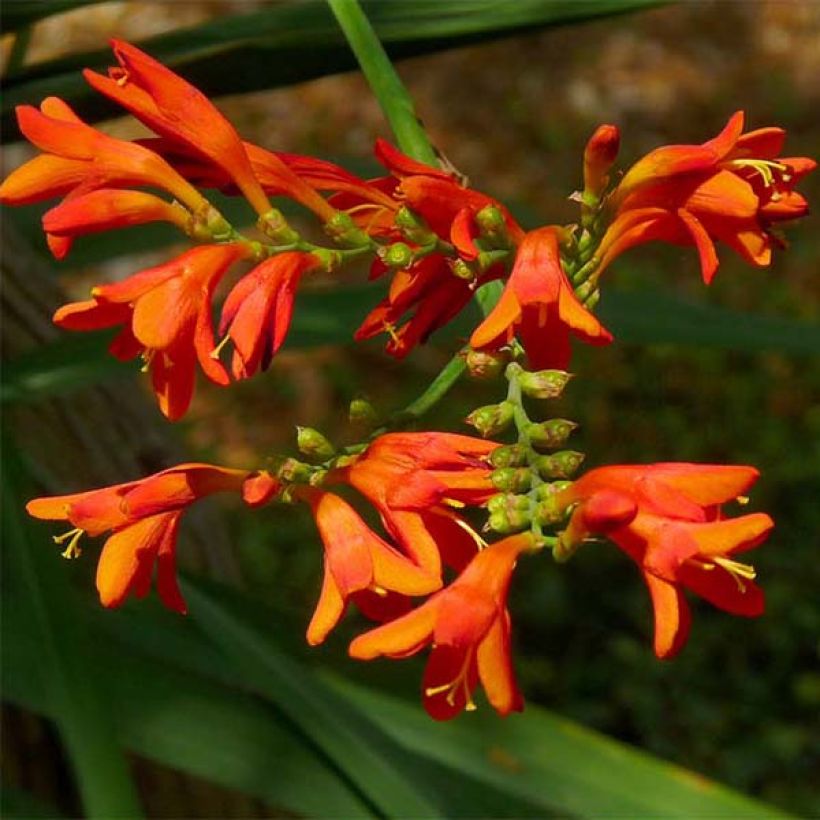

Flowering
Foliage
Plant habit
Botanical data
Crocosmia
crocosmiiflora
Météore
Iridaceae
Montbretia
Cultivar or hybrid
Other Crocosmia
View all →Planting and care
Plant crocosmias in full sun, preferably in spring. They need well-drained and airy soil. Work the soil well at the time of planting and if necessary incorporate some sand. They should be covered with 5 to 8 cm (2 to 3in) of soil and spaced about fifteen cm apart. They like rich soils. Apply fertiliser at the time of planting and every spring. While they prefer well-drained soil during winter, crocosmias need plenty of water during their growing season and do not tolerate any drought in summer. In regions with harsh winters, it is a good idea to dig up the corms once the foliage has dried out and store them in a frost-free location. Alternatively, cover the bed with a thick insulating mat in late autumn and remove it in March.
Planting period
Intended location
Care
Planting & care advice
This item has not been reviewed yet - be the first to leave a review about it.
Haven't found what you were looking for?
Hardiness is the lowest winter temperature a plant can endure without suffering serious damage or even dying. However, hardiness is affected by location (a sheltered area, such as a patio), protection (winter cover) and soil type (hardiness is improved by well-drained soil).

Photo Sharing Terms & Conditions
In order to encourage gardeners to interact and share their experiences, Promesse de fleurs offers various media enabling content to be uploaded onto its Site - in particular via the ‘Photo sharing’ module.
The User agrees to refrain from:
- Posting any content that is illegal, prejudicial, insulting, racist, inciteful to hatred, revisionist, contrary to public decency, that infringes on privacy or on the privacy rights of third parties, in particular the publicity rights of persons and goods, intellectual property rights, or the right to privacy.
- Submitting content on behalf of a third party;
- Impersonate the identity of a third party and/or publish any personal information about a third party;
In general, the User undertakes to refrain from any unethical behaviour.
All Content (in particular text, comments, files, images, photos, videos, creative works, etc.), which may be subject to property or intellectual property rights, image or other private rights, shall remain the property of the User, subject to the limited rights granted by the terms of the licence granted by Promesse de fleurs as stated below. Users are at liberty to publish or not to publish such Content on the Site, notably via the ‘Photo Sharing’ facility, and accept that this Content shall be made public and freely accessible, notably on the Internet.
Users further acknowledge, undertake to have ,and guarantee that they hold all necessary rights and permissions to publish such material on the Site, in particular with regard to the legislation in force pertaining to any privacy, property, intellectual property, image, or contractual rights, or rights of any other nature. By publishing such Content on the Site, Users acknowledge accepting full liability as publishers of the Content within the meaning of the law, and grant Promesse de fleurs, free of charge, an inclusive, worldwide licence for the said Content for the entire duration of its publication, including all reproduction, representation, up/downloading, displaying, performing, transmission, and storage rights.
Users also grant permission for their name to be linked to the Content and accept that this link may not always be made available.
By engaging in posting material, Users consent to their Content becoming automatically accessible on the Internet, in particular on other sites and/or blogs and/or web pages of the Promesse de fleurs site, including in particular social pages and the Promesse de fleurs catalogue.
Users may secure the removal of entrusted content free of charge by issuing a simple request via our contact form.
The flowering period indicated on our website applies to countries and regions located in USDA zone 8 (France, the United Kingdom, Ireland, the Netherlands, etc.)
It will vary according to where you live:
- In zones 9 to 10 (Italy, Spain, Greece, etc.), flowering will occur about 2 to 4 weeks earlier.
- In zones 6 to 7 (Germany, Poland, Slovenia, and lower mountainous regions), flowering will be delayed by 2 to 3 weeks.
- In zone 5 (Central Europe, Scandinavia), blooming will be delayed by 3 to 5 weeks.
In temperate climates, pruning of spring-flowering shrubs (forsythia, spireas, etc.) should be done just after flowering.
Pruning of summer-flowering shrubs (Indian Lilac, Perovskia, etc.) can be done in winter or spring.
In cold regions as well as with frost-sensitive plants, avoid pruning too early when severe frosts may still occur.
The planting period indicated on our website applies to countries and regions located in USDA zone 8 (France, United Kingdom, Ireland, Netherlands).
It will vary according to where you live:
- In Mediterranean zones (Marseille, Madrid, Milan, etc.), autumn and winter are the best planting periods.
- In continental zones (Strasbourg, Munich, Vienna, etc.), delay planting by 2 to 3 weeks in spring and bring it forward by 2 to 4 weeks in autumn.
- In mountainous regions (the Alps, Pyrenees, Carpathians, etc.), it is best to plant in late spring (May-June) or late summer (August-September).
The harvesting period indicated on our website applies to countries and regions in USDA zone 8 (France, England, Ireland, the Netherlands).
In colder areas (Scandinavia, Poland, Austria...) fruit and vegetable harvests are likely to be delayed by 3-4 weeks.
In warmer areas (Italy, Spain, Greece, etc.), harvesting will probably take place earlier, depending on weather conditions.
The sowing periods indicated on our website apply to countries and regions within USDA Zone 8 (France, UK, Ireland, Netherlands).
In colder areas (Scandinavia, Poland, Austria...), delay any outdoor sowing by 3-4 weeks, or sow under glass.
In warmer climes (Italy, Spain, Greece, etc.), bring outdoor sowing forward by a few weeks.






























